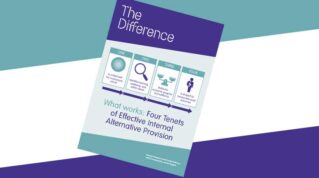During the pandemic, initial teaching training applications surged. Attributed to labour market uncertainty and the recession-proof nature of teaching as a profession, this boom seems to have been short-lived (applications are down 23 per cent on last year). So once again, we face a serious skills shortage.
This issue is further compounded in special schools supporting children and young people with social, emotional and mental health (SEMH) needs. The SEMH schools within our own trust are currently seeking to fill vacancies at all levels, and we are not alone in facing this problem. In just one county where one of our schools is located, ten special schools are currently advertising for a total of 50 teaching assistants.
If our trust is anything to go by, retention isn’t the problem. Once staff are in, they tend to stay. But demand for SEMH provision is increasing constantly, and our growth simply can’t match it if we cannot attract the right people to fill new roles. This means we won’t be able to support the increasing number of children who need specialist provision, many of whom are currently awaiting EHCPs in an extremely backlogged system.
Working in the classroom is a genuine vocation. It’s rewarding, but it’s hard, and nowhere more so than in SEMH settings. We need to be open and honest about the challenges if we want to attract the right people. Because the truth is that not every applicant will be suited to the environment, even if they are excellent teachers.
If our trust is anything to go by, retention isn’t the problem
For example, pupil premium-eligible students in our own SEMH schools represent anywhere between 60 and 80 per cent of our cohorts, compared with a national average closer to 20 per cent. Often with multi-agency involvement, many of our pupils and their families are dealing with difficult issues at home, including mental health and domestic abuse (which have become worse for many during the pandemic).
In addition, most SEMH pupils are around two years behind academically when they join our schools. All come with ECHPs, around two-thirds have speech and language issues and there are many on the autistic spectrum. This context makes for a challenging and often unpredictable working environment. So, our staff need high levels of resilience, empathy and an ability to compartmentalise their working life.
And like any school, we need a diverse mix of staff to ensure the best outcomes for pupils. This includes SEN specialists who are experts in personalisation of learning, alongside subject specialists with strong pedagogy and deep curriculum knowledge ̶ all of whom can set consistently high standards and expectations.
SEMH specialist settings offer the chance to hone those skills, with smaller classes and fewer pupils. Which means staff really get to know every child and offer full, holistic support. They form close relationships with pupils and their families, with positive and tangible impact, really ‘making a difference’ and transforming lives.
While many new teachers in the mainstream sector are reportedly leaving because they feel their role is closer to that of a mental health or social worker, this is the everyday reality in SEMH schools. The crucial difference is that we recognise it and support our staff to develop the skills they need to thrive in that context – which includes making staff wellbeing a priority.
Staff networks in our own SEMH schools are tight, with peer-to peer support and genuine understanding of the challenges we share. Therapeutic support and high-quality supervision are the norm, and we structure the year to enable an early end to the summer term, too.
Teaching salaries will never reflect the true level of dedication and hard work that is required in special schools. But that’s true of all schools.
What we need to tackle recruitment and retention is better communication and understanding across the sector, so that teachers’ skills are not lost to a bad fit but are redeployed to where they will make the most difference and staff will feel the most rewarded.
And for all the challenges, few settings offer the opportunity to transform lives like SEMH schools do.












Your thoughts